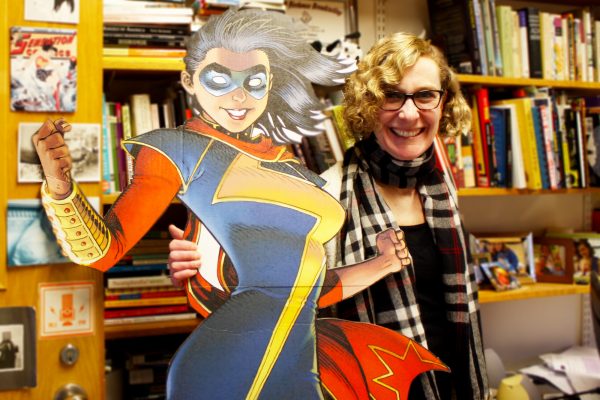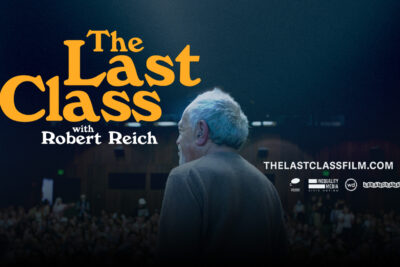As a kid, Jessica Baldanzi, associate professor of English at Goshen College, loved comics. She would read Archie, Superman, Richie Rich and more.
Over the years, her interest in comics has expanded past her brother’s superhero comics to the analysis of the female body as it is represented in comics and graphic novels.Baldanzi’s developing manuscript, Representing Women in Graphic Fiction: Bodies and Boundaries, is the result of that interest and a book proposal she composed during her spring 2020 sabbatical that has since been accepted by Routledge.
Baldanzi’s work around feminism and graphic novels is a culmination of her focus on graphic narrative, her writing and her feminism. After majoring in creative writing at Northwestern University, she went to Indiana University Bloomington, where her graduate work focused on feminism and representations of bodies.
Although her Ph.D. work was in fiction and not comics, she said she was developing the base for the work she would do on Bodies and Boundaries.
Baldanzi began working at Goshen College in 2006. Two years later, given the chance to teach an elective course, she introduced Engl 235: Graphic Novel. In the course, she leads her students through prominent graphic literature. Baldanzi starts with Art Spiegelman’s Maus, a graphic novel that reimagines the experience of Holocaust survivors, a book that she discovered in one of her classes at Indiana University Bloomington.
The class is only partly devoted to literature. The other part is creative, as students develop their own characters and comics. One of Baldanzi’s assignments is for her students to turn themselves into a comic character.
Over the years, she has noticed that, while her male students were able to represent themselves on the page with relative ease, the female students resorted to abstract shapes or childlike figures. Female students had to battle with a lot more questions than their male counterparts, Baldanzi said. They grappled, for example, with whether to lean into the comic book tropes of women with big boobs and hairbows.
Baldanzi’s observations eventually became an essay, “Beyond Hair Bows and Cleavage: Helping Women Draw Their Iconic Selves,” included in the collection Lessons Drawn: Essays on the Pedagogy of Comics and Graphic Novels that was published in 2019.
Baldanzi was a co-editor on another essay collection, Ms. Marvel’s America: No Normal and the Graphic Novel special issue of the Center for Mennonite Writing Journal. She also reviews graphic novels on her blog, Commons Comics.
Baldanzi isn’t the first person to write about women in graphic novels. Graphic Women: Life Narrative and Contemporary Comics, by Hillary Chute, was one of the first books to dive into how women are represented and represent themselves through this medium.
But Chute focused on how women illustrate their own stories. What about stories from the imagination of women? Fiction is a gap in the literature on gender and graphic novels that Bodies and Boundaries seeks to fill.
For most of their existence, comics and graphic novels have depicted women in tight outfits and with bodies intended to satisfy a heterosexual male reader.
“Comics [are] a little behind when it comes to gender representation,” Baldanzi said.
But the readers and writers of graphic novels have changed a lot in recent years. With changes in readership and authorship has also come a change in the way women and their bodies are represented in graphic narratives.
Baldanzi’s book chronicles the last 10 years since Graphic Women, including the fictional representations of the female body that have marked the past decade and the changes that have come with it.
“I am mostly interested in how women’s bodies are represented on the page,” said Baldanzi. “How do women draw themselves on the page?”
One integral work Baldanzi explores is Tillie Walden’s On a Sunbeam, a genderqueer space opera and intergalactic love story. But Walden’s book isn’t only a standout because of its LGBTQ+ representation and science fiction spin. The bodies of the characters are light because of their resistance to gravity, thin line art, and faded hues.
According to Baldanzi, Walden’s bodies “are very light and airy and actually float,” a unique feature compared to the heavy and bold bodies of many woman-illustrated female characters. But Walden’s characters resist this trope. They also resist gravity, labels and social constriction such as homophobia.
On a Sunbeam is one of five featured works that make up the five chapters of Bodies and Boundaries.
Baldanzi said that Bodies and Boundaries is the “most scholarly work” she has taken on yet. The research-heavy work needed to finish this manuscript requires hours of uninterrupted time which has been sparse since she and the rest of her family have been home due to the pandemic.
As of now, there is no set release date for the book. Baldanzi is ready to finish the remaining three chapters of the book and get the manuscript turned into Routledge for publication.

